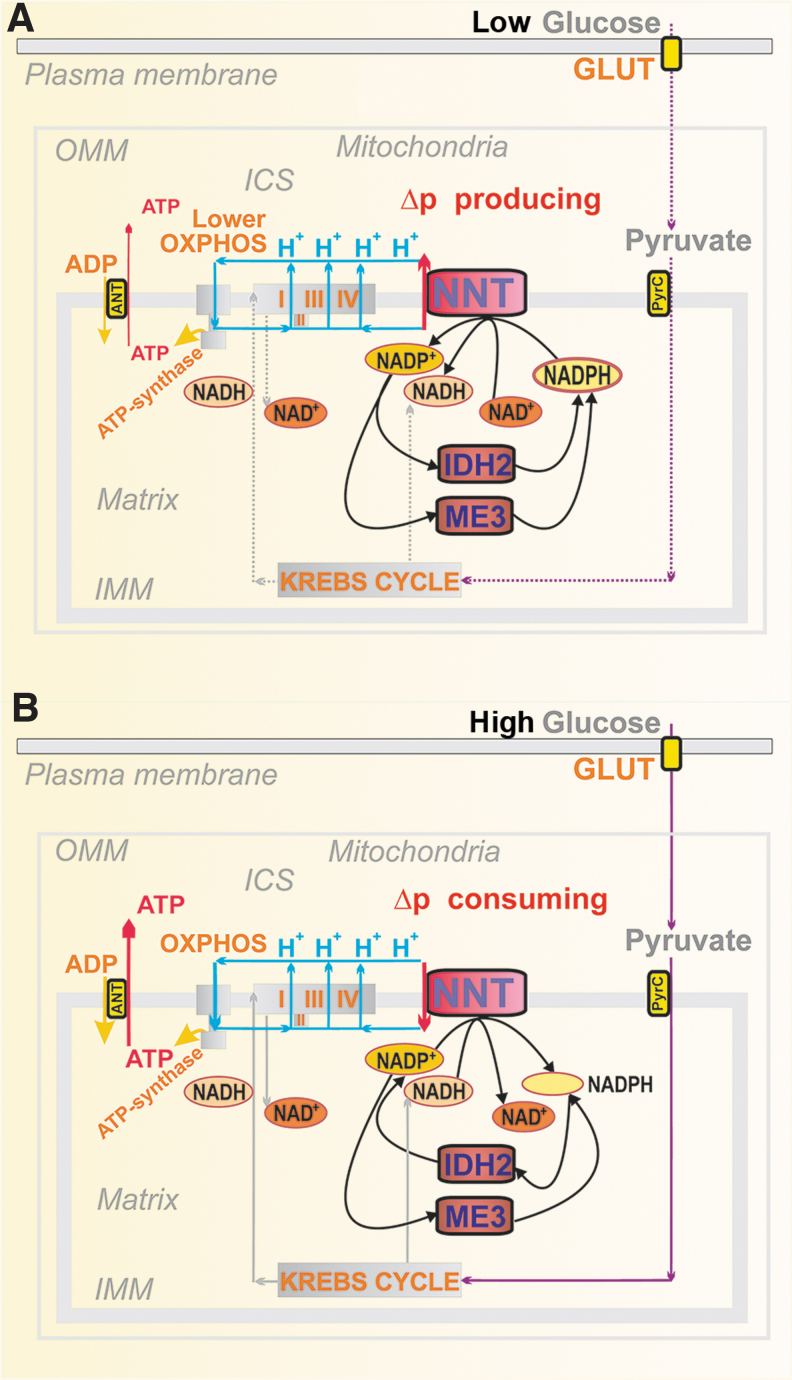FIG. 6.
Hypothetical reverse and forward mode of nicotinamide nucleotide translocase at low and high glucose, respectively. (A) Low glucose conditions: hypothetical reverse NNT mode is depicted, when NNT acts as a proton pump, using the energy of NADPH and NAD+, converting them to NADP+ and NADH, respectively. It would be possible, since under low glucose conditions in pancreatic β-cells, a lower Δp would allow the proton pumping against that Δp. Possible NADPH sources could be the matrix IDH2 providing oxidative decarboxylation and ME3. (B) High glucose conditions: forward NNT mode is possible (193) when NNT uses Δp to translocate H+ into the matrix and drives NADPH formation from NADP+ with the simultaneous conversion of NADH to NAD+. This mode is highly probable upon GSIS since a high Δp is established, thus driving the H+ influx via NNT. Also, since the pyruvate/isocitrate shuttle is activated upon GSIS, it switches the IDH2 reaction direction to reductive carboxylation and NADP+ production. ME3, malic enzyme 3; NNT, nicotinamide nucleotide transhydrogenase.

